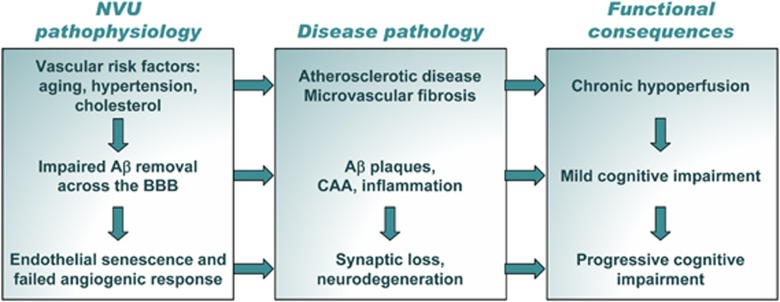Figure 3.
Vascular hypothesis of neurodegeneration in Alzheimer's disease. Early triggers of homeostatic misbalance are common vascular risk factors, including age, hypertension, and cholesterol, leading to atherosclerotic disease and microvascular fibrosis. Functional consequence of these changes is chronic hypoperfusion that initiates neurovascular remodeling cascade. While the aberrant clearance of amyloid-β (Aβ) across the blood–brain barrier (BBB) initiates ‘seed' accumulation of Aβ in the brain and brain vessels, endothelial senescence, and impaired adaptive angiogenic response perpetuates chronic hypoxia, jointly leading to increased Aβ burden and clinical symptoms of mild cognitive impairment. Subsequent accelerated synapse loss and neurodegeneration in combination with progressive vascular pathology result in advanced cognitive loss characteristic of progressive disease.

